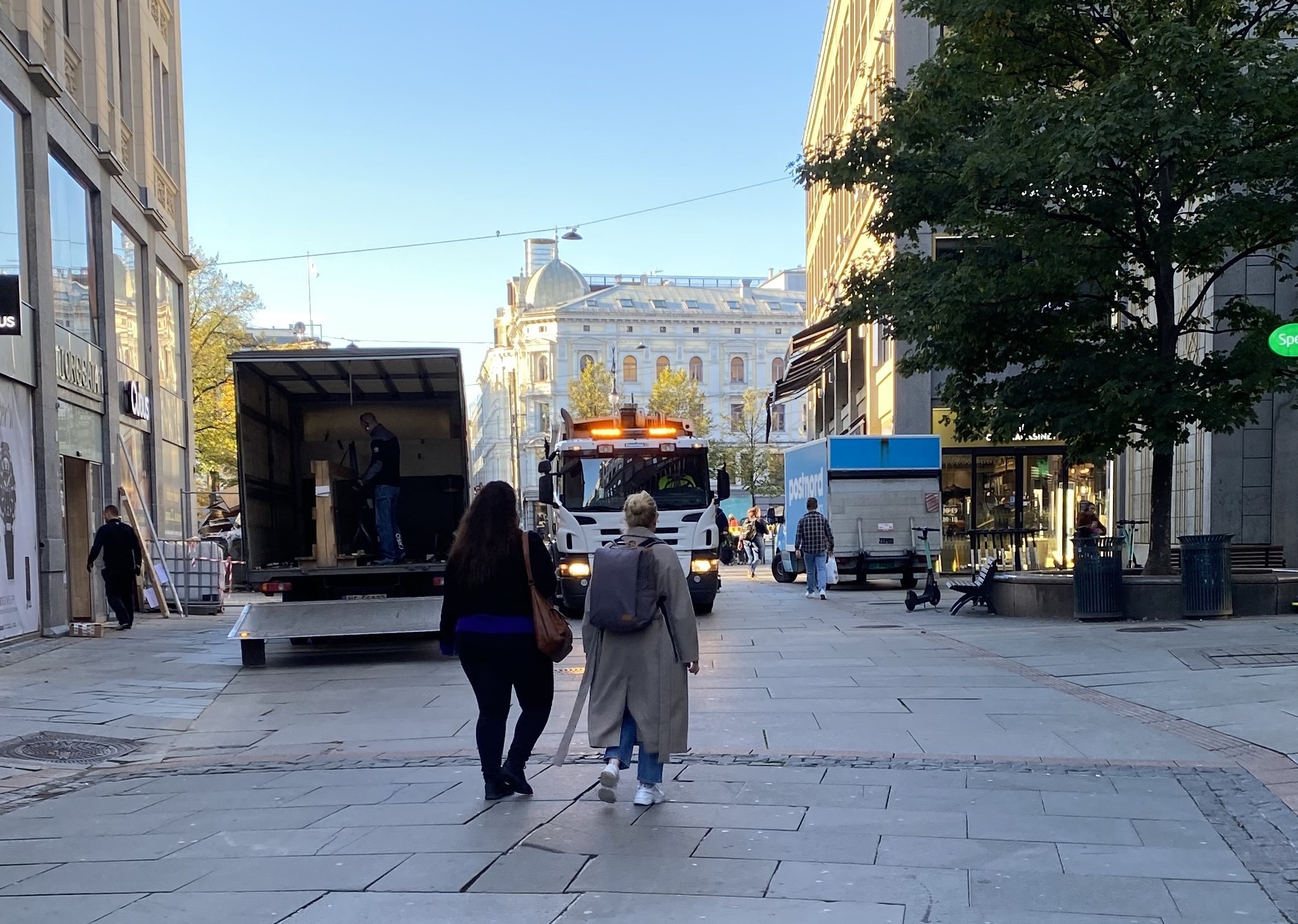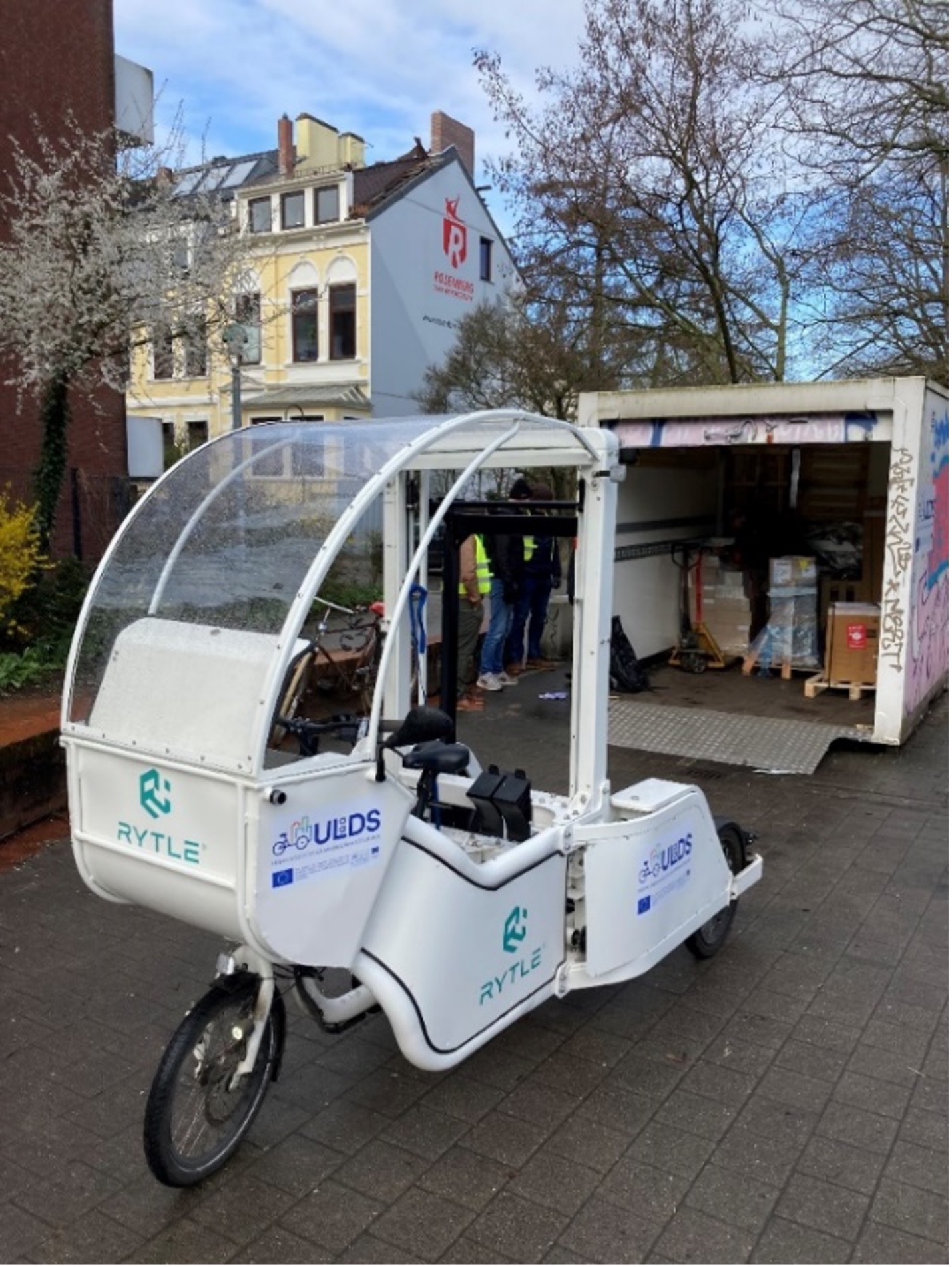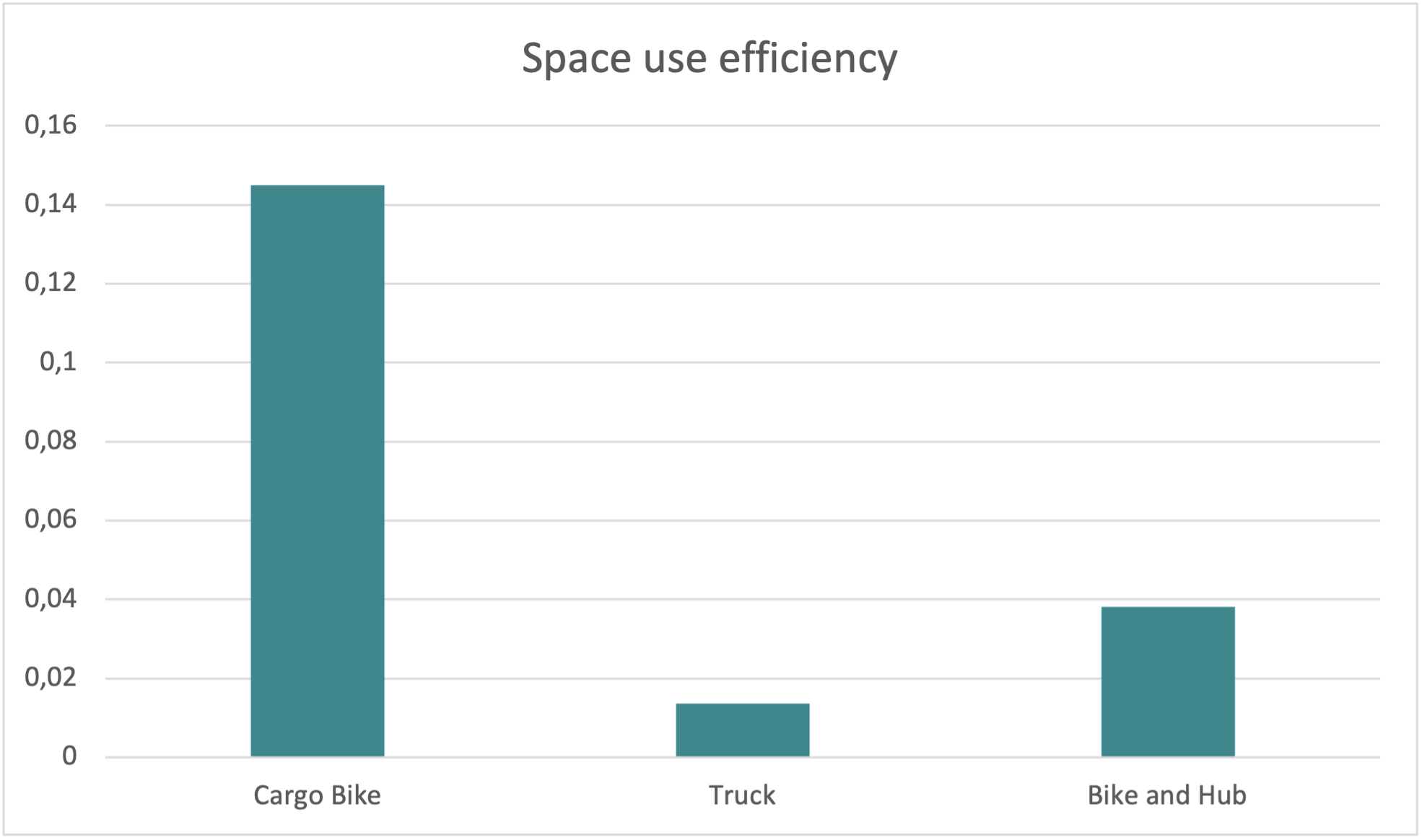Redefining urban space: the hidden impact of logistics in cities
Redefining urban space: the hidden impact of logistics in cities
ULaaDS members Delphine Pernot and Howard Weir (TØI), delve into the complex interplay between urban logistics and city space utilisation. They examine the challenges and conflicts arising from the use of urban space for logistics activities, such as parking and traffic congestion, and their impact on city liveability. The insight also explores innovative approaches and research, like in ULaaDS, in measuring and improving space use efficiency in urban logistics, highlighting the need for a balance between operational efficiency and sustainable urban living.
Space use for logistics activities: more than a parking problem

In dense urban cores, space is a scarce resource for both businesses and residents. The diverse needs for space usage often lead to conflicts between private and public interests, as well as among various users such as pedestrians, cyclists, car drivers, and logistics operators. The competition for space is particularly evident in the allocation of parking areas. Urban freight parking vies with spaces for private cars, cycle lanes, sidewalks, and pedestrian zones. But providing less parking space for trucks also means more trucks parked haphazardly, exacerbating traffic congestion. In Seattle, a significant 28% of the total trip time for commercial vehicles is spent searching for a parking space, adding more congestion to the city. When implementing a pedestrian area, cities want to improve liveability by making areas more attractive for residents, shoppers, and tourists, while also trying to cut down local pollution. However, the impact of such urban planning on logistics activities, and vice versa, is not sufficiently taken into consideration in pedestrianisation plans, even though it can worsen congestion by concentrating vehicles on surrounding roads and/or during delivery windows (deliveries are usually authorised in the morning in pedestrian areas).
It is important for cities to give more thought to how logistics activities are occupying space and the subsequent impact on urban liveability. The issue of space usage for logistics extends beyond parking and traffic concerns; it encompasses the broader organisation of logistics activities and its implications for urban planning, environment, and social dynamics. In addition to the space used by vehicles, there is also a need for available areas to install logistics facilities. Due to the lack of available space and high prices, many of them have moved from the inner city to the fringes of metropolitan areas, where land is cheaper and suitable for large warehouses. This phenomenon known as logistics sprawl is often driven by pedestrianisation and the associated increase in the rental value of commercial floors. However, relocating logistics facilities to the outskirts can also create many negative externalities, such as air pollution, noise, and congestion. This is because trucks and vans have to drive further to enter city centres, where there is a high concentration of people and businesses awaiting deliveries. The areas to which logistics facilities are moved are also often low- and medium-income neighbourhoods, meaning that these population groups are more exposed to the negative consequences of logistics activities. It shows that the organisation of urban logistics also raises concerns regarding class and environmental justice.
Logistics activities, typically managed by private entities, are organised to maximise efficiency and minimise costs, often overlooking the planning and liveability aspects of urban spaces. To help cities in influencing the choice of logistics vehicles and the organisation of space usage, it is crucial for research to explore ways to comprehensively assess the nuisances caused by vehicles, not just in terms of efficiency but also considering sustainability and liveability. For instance, developing tools to compare the real impact of different types of vehicles could be a significant step forward.
Making the invisible visible
Space use is usually measured by the surface area occupied by vehicles. But this way of measuring the impact of logistics vehicles on cities does not take into consideration other kinds of nuisances, not fully representing the effects on city liveability. Due to a lack of measurements, other nuisances remain largely invisible. For example, when comparing a cargo bike and a van, many different impacts could be taken into consideration: pollution, noise, congestion, as well as safety and how vehicles interact with pedestrians and other vulnerable traffic users. This raises several pertinent questions: Do people avoid pedestrian areas during delivery hours due to these externalities? Does the presence of a large vehicle parked in front of a shop negatively affect its sales? Can blocked sight lines caused by large vehicles lead to psychological distress or safety hazards? Are parents more concerned about their children’s safety when logistics vehicles are operating nearby?
A recent study by Just Economics (2022) has shed light on the hidden environmental and social costs associated with different types of logistics vehicles. The cost of e-cargo bikes is estimated to be 8.58 times lower than the cost of diesel vans and 7.00 times less than electric vans. This calculation takes into account the environmental costs (climate change, air pollution, noise and water pollution) and the social costs (accidents, infrastructure costs, congestion and health implications for riders versus drivers). The study also highlights that pricing does not fully capture the economic cost of deliveries made by vans, since drivers are covering parts of the costs themselves, including vehicle purchase or fuel. In contrast, cargo bike riders are usually employed on a payroll, with these costs covered by their employer.
So, how can we make these issues more visible when making decisions at the city level? It would be impractical to measure all these negative impacts city-wide. A more feasible approach is to use the area-time (m2.t), which measures the space used over time by a vehicle remaining in the same location. It considers the vehicle’s footprint, as well as the period of time the vehicle occupies the area. It is an effective tool for comparing the impact of a large vehicle that occupies a street for a short period versus a smaller vehicle that remains for a longer duration. The Elskedeby (“Beloved City”) project that took place in Oslo takes this indicator one step further by improving the calculation of the area occupied by a vehicle, acknowledging that the actual space occupied extends beyond the vehicle’s physical dimensions. For example, when a vehicle is parked, it creates a surrounding zone where it is impossible to walk, cycle, or drive, with larger vehicles necessitating wider zones. Additionally, when vehicles are loading and unloading, they require space not only for the open doors and lift gate but also for the driver. While smaller vehicles such as cargo bikes close their door when delivering the goods, trucks usually leave their lift gates down. The Elskedeby method also considers this by assigning varied weights to the space used during loading/unloading, depending on the vehicle type.
Although this is an improvement, this indicator does not fully capture the externalities created by different vehicles. We suggest that nuisances may increase exponentially with the vehicle volume, meaning that volume could be a proxy to compare the extent of nuisance caused. More research is needed to evaluate this hypothesis, and the ULaaDS project has tried to contribute to this area of study.
The ULaaDS connection
The ULaaDS project aimed to develop an indicator for space use efficiency based on the volume occupied by different vehicles and facilities. This is particularly relevant in densely populated areas, where the visual obstruction caused by a vehicle can have impacts on the delivery zone. The space use efficiency indicator essentially reports the amount of cargo delivered over time in relation to the vehicle’s size.
All ULaaDS trials have been evaluated through the lens of space use efficiency, but a prime example of this in action is the Rytle trial in Bremen, which effectively illustrates the potential of cargo bikes to revolutionise space use in inner-city areas for general cargo transport. In this trial, consolidated goods are delivered by a 7.5-ton truck to micro hubs near the city centre, from where they are transloaded to cargo bikes. These purpose-built cargo bikes are capable of carrying either a swappable container or a Euro pallet, which allows them to replace truck movements in the most crowded areas of Bremen. During the trial, the average weight of individual deliveries was nearly 70 kg, challenging the traditional narrative that cargo bikes are only suitable for delivering small packages.

The diagram below represents the space use efficiency indicator for the different vehicles and facilities from the Rytle trial, assuming they occupy space for one hour to deliver a single unit of cargo, such as a Euro-pallet. As expected, it shows that the cargo bike is significantly more efficient than a truck. However, it’s important to consider the logistical footprint of the micro hub from which the bike operates. If we also consider the volume occupied by the micro hub (a 10-foot container), in addition to the cargo bike, efficiency is reduced, but the combination of the two is still more efficient than the truck. In other words, if a truck takes 12 minutes to deliver a Euro-pallet, the cargo bike can take up to 33 minutes to deliver the same pallet while still maintaining greater space use efficiency in combination with the micro hub This highlights that focusing solely on logistics efficiency might overlook the broader benefits of reduced space usage in urban centres. A more comprehensive consideration of space use efficiency across different vehicles can bring to light some of the less tangible impacts of logistics activities, thereby encouraging the adoption of smaller, more space-efficient vehicles.

The trial also raises questions about the value of occupied space. The location of occupied space and the time of day or week it occupies space also has an impact on the perceived nuisances. For instance, a micro hub situated in a parking area just outside a pedestrian zone is less intrusive than one positioned directly on a pedestrian street. Moreover, the impact of the hub’s presence is less pronounced during off-peak hours, such as at night, compared to periods of high traffic.
ULaaDS has started to address this gap, but there is a need for further research to establish a robust link between space use and other nuisances. The work conducted has highlighted the importance of developing an indicator that not only quantifies space use but also highlights the benefits of implementing space-saving solutions. Future research should explore users’ perceptions of logistics activities to refine this indicator. Such a tool would be relevant for cities interested in making their streets more liveable, guiding them in forming policies in favour of more sustainable logistics practices.



